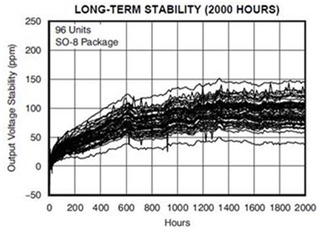Other Parts Discussed in Thread: LM317
Hello,
We are considering using LM317A for an application that require good Vout accuracy of 2.5% over time and in temperature.
Our application is 30V -> 24V with very small Vin range and Vout load varation (Iout = 10mA), and I plan to use 0.1% feedback resistors for feedback accuracy.
In the datasheet I see two dominant parameters for accuracy that are :
-Load regulation (1%)
-Long term stability (1%)
My questions are :
For load regulation, does it takes into account the variation of Iadj ? Can we improve that parameter using a buffer before ADJ input ?
Does long term stability takes into account load regulation or should I sum these two parameter for global accuray ?
Does long term stability gets worst than 1% beyond 1000 hrs ?
Finally, is the LM317A the best linear regulator for our application or do you have a more accurate device that would suit our Vin/Vout Iout needs ?
Thank you for your support.
Adrien



